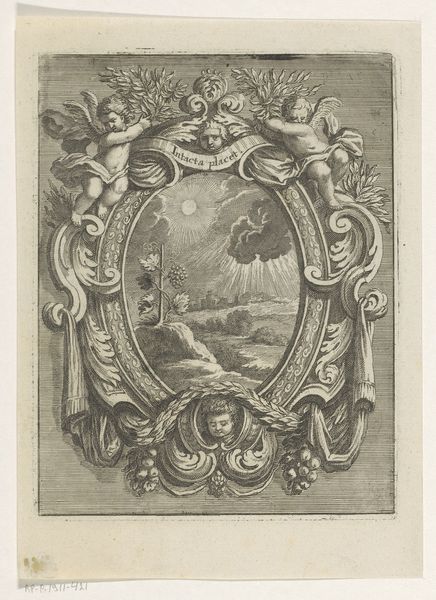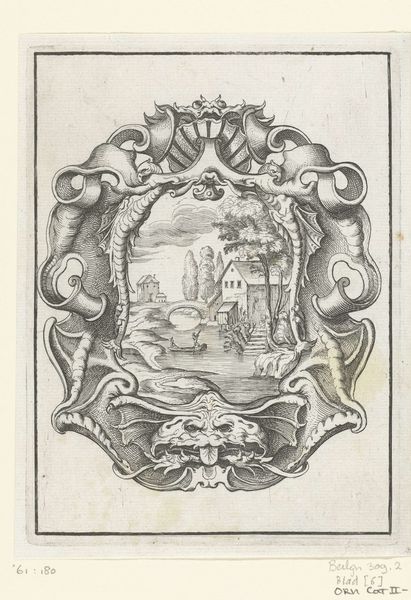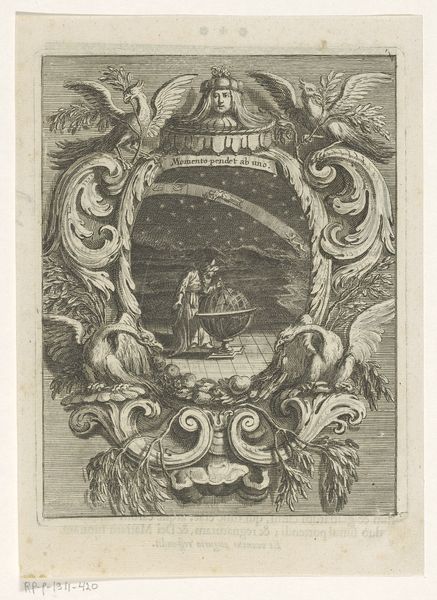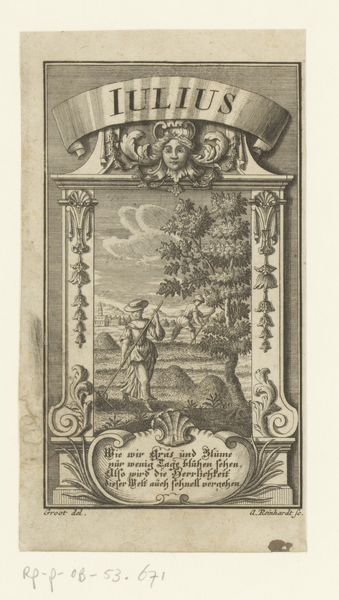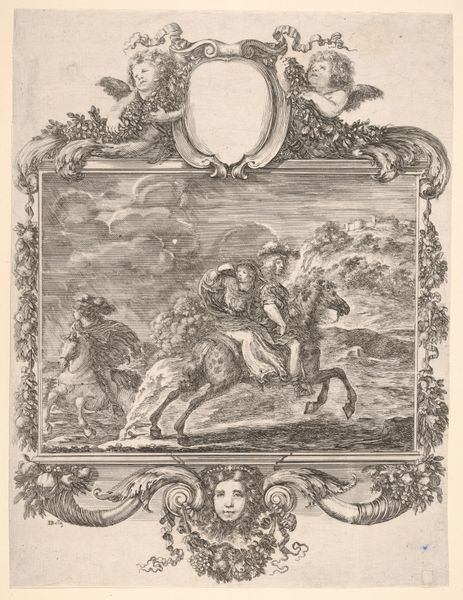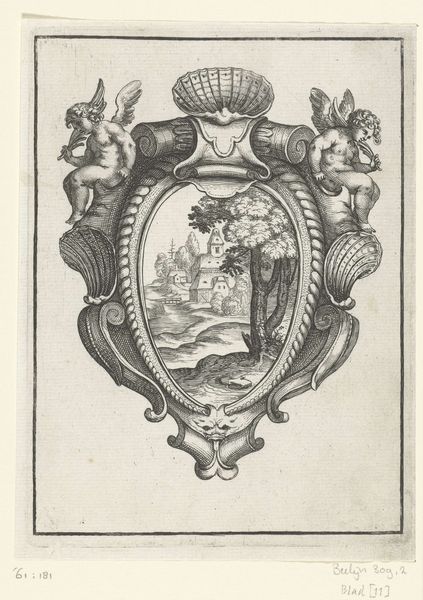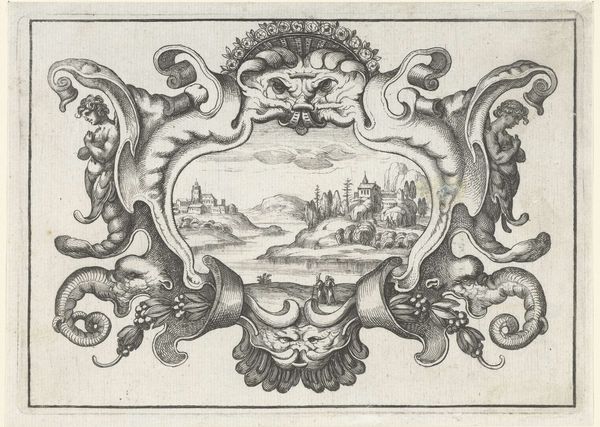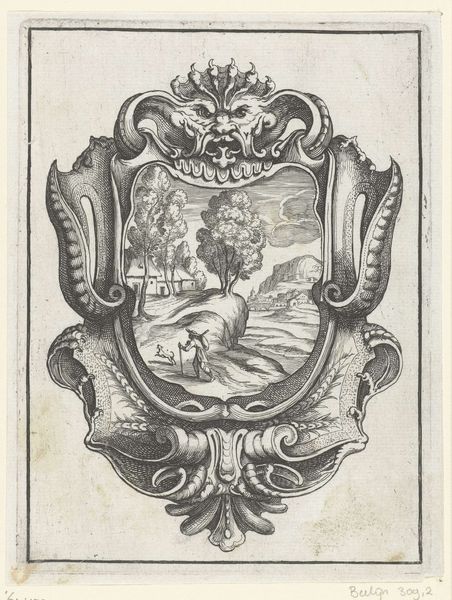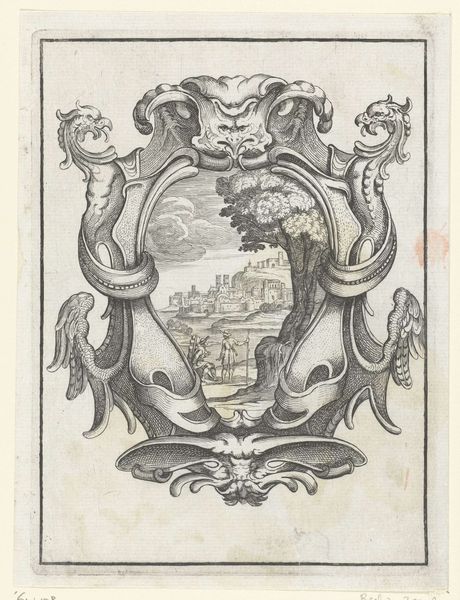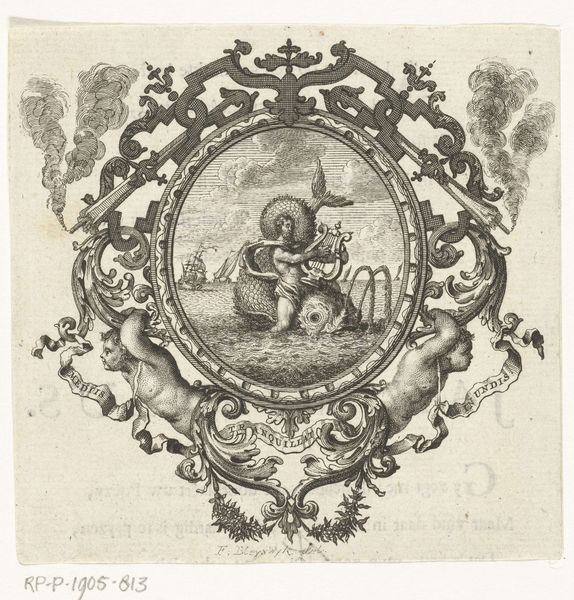
#
toned paper
#
light pencil work
#
pen drawing
#
old engraving style
#
personal sketchbook
#
pen-ink sketch
#
pen work
#
sketchbook drawing
#
sketchbook art
#
pencil art
Dimensions: height 203 mm, width 159 mm
Copyright: Rijks Museum: Open Domain
Curator: Welcome. Before us hangs Gabriel Ehinger's "Zonneschijn en regenboog," or "Sunshine and Rainbow" from 1695, a pen and ink sketch held at the Rijksmuseum. Editor: It’s… intricate. Dense, even. The swirling ornamentation almost overwhelms the landscape nestled within. It looks like something lifted from an alchemist’s notebook. Curator: Indeed, the engraving is richly embellished, very much reflecting the Baroque fascination with elaborate allegories and symbolic displays of power and knowledge. The work could have very well served an audience captivated by esoteric knowledge. Editor: What's most fascinating to me is the quality of the line work. It is so fine and light, as if he were feeling the forms out as he went along, capturing fleeting moments with immediacy. The medium has such intimacy to it. Curator: Consider the context. The late 17th century was a time of burgeoning scientific discovery, where natural phenomena such as rainbows were shifting from the realm of divine miracle to scientific explanation. The title hints at that transitional moment of a "work of the sun". Editor: Absolutely, and the rendering of that tiny city – likely a Dutch urban center, judging by the architecture– points to burgeoning commercial and civic life being framed, quite literally, by forces of nature and even labor, not entirely dominated by it. A counter-balance between these worlds, no? Curator: An insightful perspective! The work offers a glimpse into the cultural landscape. Prints like these served various roles, spreading visual ideas. Were these images of power intended only for the elites? Perhaps they influenced aspirations of broader society? Editor: And thinking about how prints operate– the process is repeatable, democratic almost, despite the visual language of ornamentation speaking to wealth or power. These lines, etched with ink, represent an industrial multiplication, something inherently connected to social and economic movement. Curator: A thoughtful synthesis, the piece reminds us of how intertwined scientific observation, artistic practice, and cultural meanings were. Editor: Ultimately, it speaks to how human society constantly reshapes and finds harmony within nature's grandeur.
Comments
No comments
Be the first to comment and join the conversation on the ultimate creative platform.
